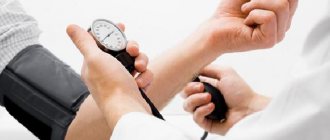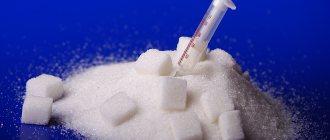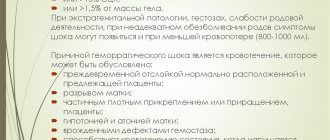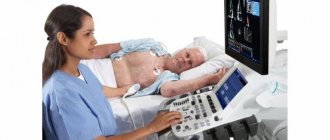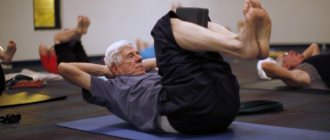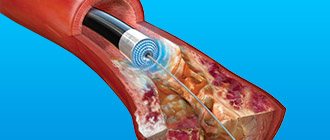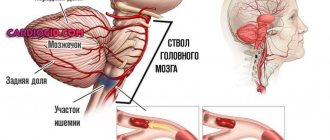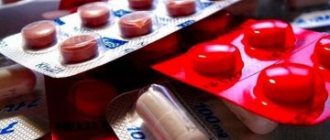According to the World Health Organization, many patients die from a heart attack in the prehospital stage. Observations show that men die more often than women, and the cause of death is usually sudden death. The frequency of such sad outcomes is not related to the month of the year, but depends on other factors: time of day (usually in the early night or morning hours), day of the week (usually on weekends).
According to some statistics, approximately half of the men and 1/3 of the women who died due to myocardial infarction did not know that they had some kind of pathology of the heart and blood vessels. And the main factor predisposing to the development of this acute condition and subsequent death is arterial hypertension.
Cardiologists say that the patient’s life depends on the quality and timeliness of pre-hospital and emergency care for myocardial infarction. And this means that everyone, especially patients with coronary heart disease, should know the first signs of this acute heart pathology and the correct algorithm of action before the ambulance arrives.
The first signs of myocardial infarction
The onset of a myocardial infarction is signaled by the following symptoms:
- sudden or paroxysmal severe pain in the chest, lasting more than half an hour (up to 2 hours);
- the pain is burning, tearing, stabbing in nature, usually occurs after physical activity (sometimes immediately after sleep) and does not become less pronounced even after a state of rest;
- the pain is not eliminated (as during an attack of angina) by taking Nitroglycerin and after taking the pill (and even a repeat dose), a person may feel only a slight decrease in pain;
- severe weakness (up to pre-fainting or fainting);
- nausea;
- pain sensations radiate to the left (sometimes to the right) arm, neck area, interscapular area, teeth, scapula, lower jaw;
- severe pallor;
- the appearance of cold and sticky sweat on the skin;
- pronounced anxiety and fear of death.
Approximately half of patients with myocardial infarction experience signs of heart failure: difficulty breathing, shortness of breath, nonproductive cough, arrhythmic pulse, atrial fibrillation, sudden short-term cardiac arrest.
Video: What are the symptoms of myocardial infarction?
In some patients, the heart attack occurs in atypical forms. The following symptoms may indicate the occurrence of such an attack:
- pain in the left hand or little finger of the left hand, in the cervicothoracic spine, lower neck or lower jaw, scapula;
- pain localized in the abdomen and dyspepsia;
- suffocation and shortness of breath;
- shortness of breath with severe weakness and rapid increase in edema;
- dizziness with nausea, darkening of the eyes and a sharp decrease in blood pressure;
- dizziness with confusion, speech disturbances, nausea, vomiting and paresis of the arms and legs;
- discomfort in the chest area (without pain) with increased sweating and severe weakness.
In a number of clinical cases, a heart attack is represented by a combination of symptoms of several atypical forms (for example, cerebral and arrhythmic). Such manifestations of this life-threatening condition significantly complicate the detection of myocardial necrosis and aggravate the prognosis of the outcome of the emergency condition considered in this article.
Emergency care before the ambulance arrives. What to do?
If you suspect a myocardial infarction, you should immediately call an ambulance and provide the dispatcher with the following information:
- about suspected myocardial infarction;
- describe the symptoms observed in the victim;
- ask for a team of cardiologists and resuscitators to arrive.
Before the arrival of specialists, it is necessary to immediately begin carrying out emergency assistance measures:
- Help the patient find a comfortable position: lay him on his back and place a cushion under the back of his head, or give him a semi-sitting position by placing a pillow or folded clothes, a blanket, etc. under his back.
- Unbutton and remove clothing or accessories (scarf, belt, tie, etc.) that interfere with free breathing, and ensure the most comfortable temperature conditions (for example, open a window in hot weather or cover with a blanket in the cold season).
- Explain to the victim that he must remain still and remain emotionally calm. You need to talk to a person in the state of an attack of myocardial infarction in an even, firm and calm tone, and you should not make sudden movements that could frighten him. If the patient has manifestations of motor agitation, then give him a sedative (tincture of valerian, motherwort, Valocardin, etc.).
- Measure blood pressure: if it is not higher than 130 mm Hg. Art., then give the patient a tablet of Nitroglycerin or another drug available under the tongue, the active component of which is organic nitrates (for example, Isoket, Nitrocor, Nitrogranulong, Izodinit in the form of sublingual tablets or spray). Before the doctors arrive, Nitroglycerin should be taken again 1-2 times (that is, 2-3 tablets can be given in total). If after taking the first dose of this drug the victim has a severe throbbing headache, then the subsequent dose should be halved. And if after taking Nitroglycerin there is a sharp decrease in blood pressure, then repeated use of this nitrate-containing drug should be discontinued. When using Nitroglycerin analogues (for example, medicine in the form of Izoket spray), each dose should be 0.4 mg. Before injecting the product, the first dose should be released into the air, as it may not be complete. After this, the patient must take a deep breath and hold his breath, then an injection is performed, the mouth is closed, and breathing for 30 seconds should be carried out only through the nose.
- To prevent blood clots, thin the blood and reduce the load on the heart muscle, give the patient up to 300 mg of crushed Aspirin.
- You can put a mustard plaster on the area where the pain is localized. Constantly monitor it so that the skin does not burn.
- Count the patient's pulse, and if he does not have a history of bronchial asthma, and the heart rate does not exceed 70 beats per minute, then give him 25-50 mg of Anetolol or a dose of any other beta-blocker (for example, Bisopropol, Propranolol, Nebivolol and etc.). This measure will reduce the risk of arrhythmia and sudden death, limit the area of necrosis of cardiac muscle tissue, protect the myocardium from toxic effects and increase its tolerance to stress.
Sometimes during an attack of myocardial infarction the patient faints. The following measures can help him in such situations:
- lay the patient on his back and place a cushion under his shoulders;
- remove dental structures from the mouth (if present);
- tilt the victim's head back or turn him to one side if the patient begins to vomit;
- ensure prevention of aspiration of vomit.
Remember! If a patient with signs of myocardial infarction has stopped his heart and breathing, or his breathing movements have become intermittent (agonal), then he should immediately begin performing cardiopulmonary resuscitation measures - chest compressions and artificial respiration.
Before resuscitation begins, a precordial blow is performed - 2 strong and short blows are applied to the sternum area (at the border of the middle and lower third) from a height of 20 - 30 cm. After their execution, the pulse is immediately felt. If it does not appear, then cardiopulmonary resuscitation (indirect cardiac massage and artificial respiration) is performed:
- pressing on the heart area with a frequency of 75 - 80 per minute;
- 2 breaths into the patient’s mouth after every 15 to 20 chest compressions.
The duration of such actions should be at least 10 minutes.
Stages of heart attack and resuscitation treatment
The duration of resuscitation treatment depends on the general condition of the patient and the presence of complications.
In this case, the following stages of a heart attack are distinguished:
- Acute stage. It develops from the onset of the first symptoms and lasts for two weeks. If the person's condition is critical, then cardiopulmonary resuscitation can be used. Artificial oxygen supply is also used if necessary.
- Subacute stage. Its duration is 3-4 weeks. To normalize the condition, a person needs to stay in the hospital all this time and undergo a course of drug therapy.
After this, a rehabilitation period begins, which lasts no longer than a year. At this time, it is advisable to follow all medical recommendations, as well as undergo regular examination by a doctor.
First aid for myocardial infarction. Algorithm of actions
Emergency care for a patient after the ambulance arrives is carried out in the following sequence:
- Relief of acute pain with the help of non-narcotic and narcotic analgesics (solutions of Analgin, Morphine hydrochloride, Omnopon, Promedol) in combination with a solution of Atropine sulfate. The drugs are administered intravenously for faster pain relief.
- Carrying out an ECG.
- If delivery of the patient to the intensive care unit is possible within the next 30 minutes, then the victim is immediately taken to the hospital.
- If such rapid transportation of the patient turns out to be difficult, then drugs to restore coronary circulation (Tenecteplase, Alteplase, etc.) are administered on site.
- The patient is transferred to the ambulance as gently as possible - a stretcher is used for this. During transportation, humidified oxygen is inhaled.
After the patient is delivered to the intensive care unit, neuroleptanalgesia is administered to ensure complete relief of pain. For this purpose, medications such as Talamonal or a combination of Droperidol and Fentanyl are used. If the desired analgesic effect is not achieved, the patient is placed under inhalation anesthesia, which is provided by a mixture of oxygen and nitrous oxide.
Further, to provide first aid to the patient, the following drugs are prescribed:
- organic nitrates: Sodium isosorbide, Nitroglycerin, Isoket or others;
- anticoagulants: Heparin, etc.;
- antiplatelet agents: Acetylsalicylic acid, Cardiomagnyl, etc.;
- beta-blockers: Propranolol, Inderal, Obzidan, Anaprilin;
- ACE inhibitors: Enalapril, Ramipril, etc.;
- sleeping pills and sedatives: Temazepam, Diazepam, Triazolam, etc.;
- antiarrhythmic drugs: Lidocaine, Amiadron, Novocainamide, etc.
The treatment plan is drawn up individually for each patient. If necessary, other medications may be added to it.
To restore coronary circulation to a patient with severe forms of heart attack, the following surgical operations can be performed:
- balloon angioplasty;
- coronary artery bypass grafting.
Therapeutic measures
- Providing a medical and protective regime;
- Horizontal position;
- Inhalation administration of 100% O2 at a constant flow through a mask (nasal catheters);
- Nitroglycerin – 1 tablet sublingually or
- Nitroglycerin (spray) – 1 dose sublingually;
- If pain persists or its equivalent after 3 minutes:
- Nitroglycerin – 1 tablet sublingually or
- Nitroglycerin (spray) – 1 dose sublingually;
- Catheterization of the cubital or other peripheral veins;
- Morphine - IV slowly in fractional doses of 2-3 mg every 2-3 minutes until the effect occurs or up to a total dose of 20 mg;
- Metoprolol – 25 mg orally or 5 mg IV bolus slowly at a rate of 1 mg/min. or
- Anaprilin – 10 mg orally;
- Aspirin – 250 mg (crushed) sublingually;
- For patients under 75 years of age:
- Clopidogrel – 300 mg orally;
Patients 75 years of age and older:
- Clopidogrel – 75 mg orally;
- Heparin – 60-70 units/kg IV bolus (maximum 5000 units) or
- Fondaparinux (Arixtra) – 2.5 mg IV bolus or
For patients under 75 years of age:
- Enoxaparin (Clexane) – 30 mg IV bolus, h/w 15 minutes 1 mg/kg (not more than 100 mg) subcutaneously;
Patients 75 years of age and older:
- Enoxaparin (Clexane) – 0.75 mg (not more than 75 mg) subcutaneously;
- In case of developing myocardial infarction, if there are indications and no contraindications:
Carrying out thrombolysis :
- Tenecteplase (Metalise) IV bolus over 5-10 seconds, for body weight less than 60 kg - 30 mg; 60-70 kg – 35 mg; 70-80 kg – 40 mg; 80-90 kg – 45 mg; more than 90 kg – 50 mg or
- Alteplase (Actilyse) -15 mg IV bolus quickly, then IV bolus slowly or IV drip 0.75 mg/kg (maximum 50 mg) over 30 minutes, then IV bolus slowly or IV in drops of 0.5 mg/kg (maximum 35 mg) over 60 minutes, until the maximum dose of 100 mg is reached;
- If pain or its equivalent persists:
- Nitroglycerin (Isoket, Perlinganite) – 10 mg IV drip, at a rate of 10 mcg/min, increasing the rate of administration by 5-10 mcg/min every 10 minutes. up to 200 mcg/min., under the control of blood pressure and heart rate, on site and during medical evacuation;
- Medical evacuation (see “General tactical measures”).
Actions of a patient during a heart attack
Patients with coronary artery disease who are at risk of developing a heart attack should know not only the first signs of this dangerous condition, but also the algorithm of actions at the onset of such an attack:
- remain calm and take a “reclining” or “sitting” position;
- inform others about the onset of an attack and the need to take medications;
- if possible, call an ambulance yourself, informing the dispatcher about the development of a heart attack;
- try to move as little as possible;
- if you have medications, take 2-3 crushed tablets of Aspirin, Valocardin and Nitroglycerin;
- Describe symptoms to ambulance workers.
Video: First aid for yourself during a heart attack
After admission to the intensive care unit, the patient must follow all the doctor’s recommendations regarding medication, gradual expansion of physical activity and diet.
Possible complications of myocardial infarction
Experts divide the complications of a heart attack into early and late:
| Type of complications of myocardial infarction | When do they arise? | Types of complications |
| Early | In the first hours or days (in the first 3-4 days) after an acute attack |
|
| Late | Occurs against the background of increased motor activity of the patient 14–21 days after an acute attack |
|
Depending on the nature of the damage and disorders, complications of a heart attack are classified as follows:
| Type of complications | Nature of damage and violations |
| Mechanical |
|
| Electrical (or arrhythmic) | occur in almost 90% of patients and manifest themselves in different types of arrhythmias. |
| Ischemic |
|
| Thromboembolic |
|
| Inflammatory |
|
The most severe complications of myocardial infarction include:
- recurrent or prolonged course;
- pulmonary edema;
- areactive or true cardiogenic shock;
- clinical death;
- acute right ventricular failure;
- atrioventricular block at any location of the necrosis zone;
- acute cardiac aneurysm;
- thrombosis and thromboembolism in various organs;
- circulatory failure IIB and III degrees;
- ventricular paroxysmal tachycardia;
- gastrointestinal bleeding;
- a combination of two or more complications.
Restoring the patency of the coronary vessels
Nitroglycerin and beta-blockers have a complex effect on the body. With their help, the lumen of the coronary arteries also increases.
Reducing the vascular lumen reduces blood flow to the heart. If there is no effect from medications, surgical treatment is performed. To do this, a stenting procedure is performed.
Also read: Types of complications after myocardial infarction
The procedure is performed using special expanders called coronary stents. They are installed in a vessel and a reliable and complete restoration of blood circulation is achieved.
Potential Risks
In case of myocardial infarction, experts identify the following potential risks:
| Primary | Secondary |
|
|
Hospital treatment
Inpatient treatment of a heart attack is carried out in the cardiology department. If this is the first attack in a person, then the standard course of treatment is 28 days. During this period you need to be under the supervision of doctors.
If the heart muscle can contract normally and the patient’s age is less than 50 years, then he can be discharged after two weeks. Already at home, the person will take the prescribed medications.
The longest treatment is for those patients who have complications (blood clot formation, severe heart failure, pulmonary edema, etc.). In this condition, they may require not only drug therapy, but also surgery.

